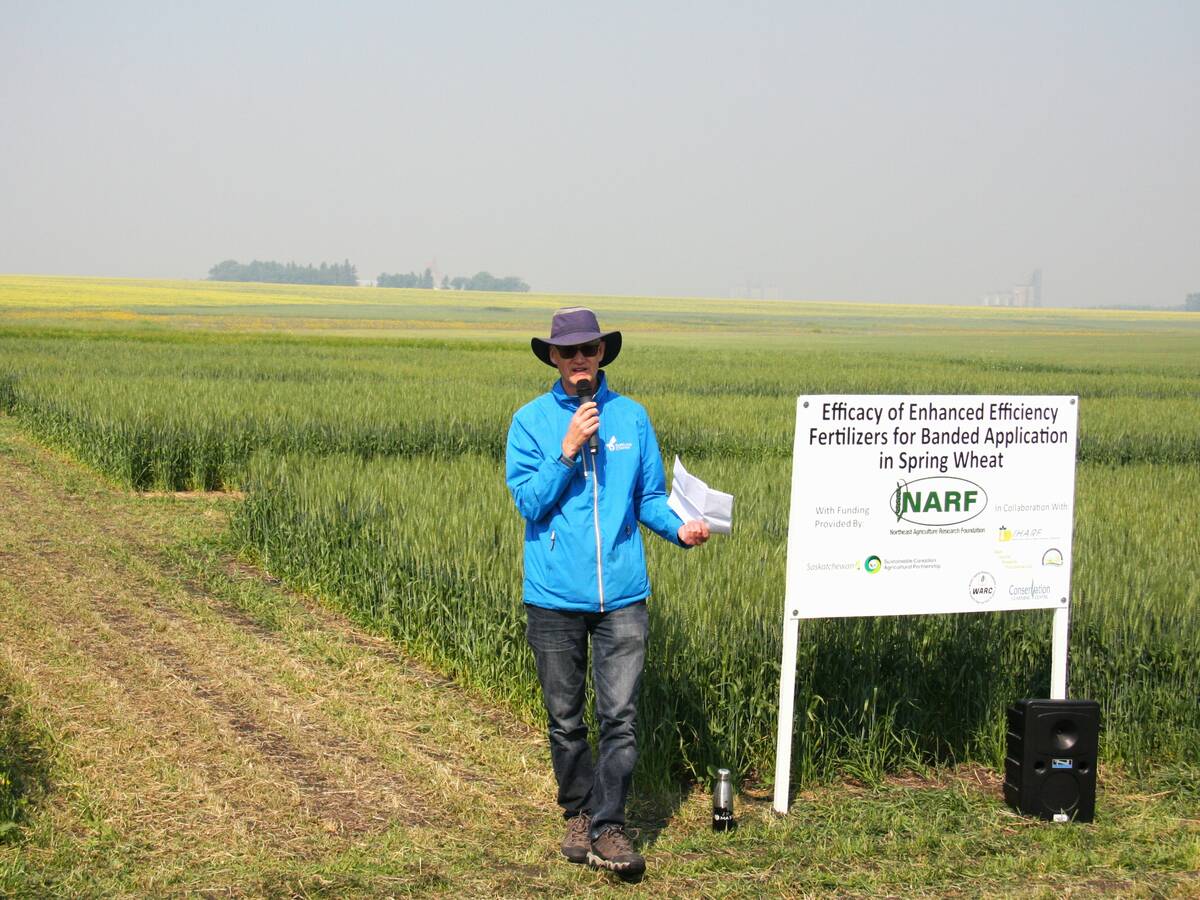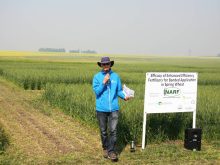The Nebraska Tractor Test Laboratory has found itself in the middle of a marketing war.
On March 18, John Deere issued a news release saying its 9.0 litre 8320R row crop tractor set fuel efficiency records at the Nebraska Tractor Test lab, outperforming similar sized tractors.
On March 19, Agco issued a release saying its 8.4 litre row crop tractors with the Sisu engine set the fuel efficiency record for tractors in that category.
The lab is not amused.
“We’re concerned that our test reports be taken in their entirety, so that certain pieces of data not be cherry picked out by one company or another,” said lab director Roger Hoy.
Read Also

Fertilizer method’s link to emissions studied
A researcher says others studying greenhouse gas emissions aren’t considering how the loss of nitrogen into the atmosphere correlates with fertilizer application or if there is an impact to yield.
He said news releases from both companies have generated a lot of discussion, mainly because each appears to have extracted only data they wanted farmers to see.
He said both brands were tested under the same protocol, according to criteria developed by the Organization for Economic Co-operation and Development (OECD).
The Agco tests were conducted by the OECD facility in Germany. The Deere tests were conducted at the NTTL-OECD facility in Nebraska.
The OECD test results provided both companies with a lot to be proud of without them needing to cherry pick data for publicity, Hoy added.
“Both of them (tractors) generated really impressive fuel-use numbers for the power they deliver,” he said.
“At some points the Deere performed better; at other points the Agco performed better. Here at the tractor lab, when somebody asks us for a fuel efficiency number, we go with the p.t.o. (power take-off) test at rated engine speed. I think in that category, the two tractors ended up with the same number.”
In its news release, Deere said that “in apples-to-apples Nebraska Tractor Test evaluations, the 8320R provides the greatest fuel efficiency in its advertised power class in test categories that best represent typical on-farm fieldwork – not stationary p.t.o. applications.”
Hoy said that statement requires clarification.
“They’re looking at drawbar test results. That’s not as easy for an apple-to-apple comparison.
“The stationary p.t.o. test is the best way to make a comparison between two tractors because it eliminates more variables. When we run a p.t.o. test, we try to hold the intake air at the front of the tractor at 73 F. It’s a controlled environment.
“But when we go out to the drawbar track, it can be anywhere from 40 to 80 F. It’s very weather dependent because it’s on an outdoor track.”
Hoy said there’s more variability in drawbar testing than in p.t.o. testing, even on the lab’s concrete track, because the drawbar test introduces many other factors that can skew results.
Hoy said a fair statistical comparison becomes more difficult the closer one gets to in-field testing because of the variables.
But according to John Deere, a stationary p.t.o. test does not represent how farmers today use high horsepower, mid-sized tractors.
“There is much less p.t.o. work performed by these tractors compared to what they did years ago,” said Chad Hogan, manager for the new 8 series tractors.
In its news release, Agco said “horsepower hour per gallon really provides a more accurate picture of fuel efficiency and how the tractor will perform in the field…. Across the board, the tractors from Agco outperformed the competition.”
Hoy said that’s not entirely accurate.
“We have always published a (fuel consumption) number that can be used to compare tractors.”
The reports include horsepower hours per gallon and pounds of fuel per horsepower hour.
“It allows a farmer to roughly compare, for example, a 220 h.p. tractor to a 205 h.p. tractor,” Hoy said. “But it’s not a replacement for the documented p.t.o. stationary test.”
However, Jason Hoult, Agco’s marketing manager, said the company believes horsepower hour per gallon is more important because it measures something a p.t.o. test can’t.
“One gallon of fuel makes a certain horsepower for one hour,” he said.
“That’s what horsepower hour per gallon shows. For tractors, it’s the closest thing we have for a miles per gallon comparison.”
Hoy said he thinks the news releases were driven by the highly competitive nature of the market.
“I work with people from both companies on standards bodies. The people I deal with are professional engineers, so there’s a common bond. They are very professional. I think sometimes the marketing people go off in a little different direction.”
Hoy said when his lab conducts tests for other industries, the client must publish the complete data if it wants to use the Nebraska lab name.
“Our motivation is that everything that’s published with the Nebraska Tractor Test Lab name must be truly unbiased and honest. No biased perception can be placed on the information.
“I don’t know what we’ll do long-term, but we do have a little leverage because they all (tractor manufacturers) have to come here to get permitted to sell tractors in Nebraska.”

















